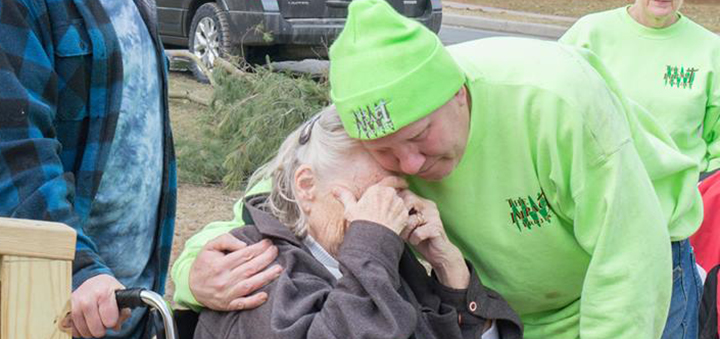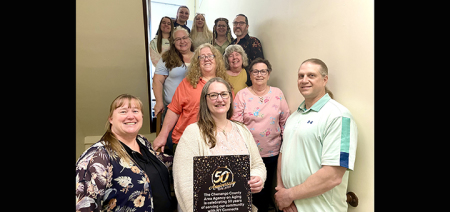Nearly One In Four Homes In Chenango County Are Vacant
Published:
June 28th, 2019
By:
Zachary Meseck
 (Zachary Meseck photo)
(Zachary Meseck photo)
CHENANGO COUNTY – According to an independent study done by the Cornell Program on Applied Demographics; more than 20 percent of the homes in Chenango County are sitting vacant, approximately 36 percent of homes are 80-years-old or older, and nearly 25 percent of the county’s population is living below the poverty level. The study was completed using information from 2017 and released in 2018.
“Chenango County is facing a housing crisis,” said The Impact Project Executive Director Jim Willard III. “Housing has come to a tipping point, and if the county doesn’t band together things will get worse, especially for the individuals who cannot afford the cost of home repairs.”
Willard said through his work at The Impact Project, a not-for-profit group dedicated towards providing free home repairs along with handicap accessible ramps to those in need throughout Central New York including in Chenango, Otsego, and Broome County; he has seen people who would have lost their homes if they didn’t have their roof replaced before it was too late.
“Approximately 36 percent of the homes in Chenango County were built in 1939 or earlier, in that timeframe most homes have gone through two or three roofs, if you’re the working poor, the ALICE population, you can’t afford to get those kinds of repairs done,” said Willard. “Imagine you’re living paycheck to paycheck, and your roof starts to leak; it’s going to cost $10,000 to get it fixed, what do you do?”
Every two years, the Chenango United Way releases its ALICE report, which uses “standardized measurements to calculate the cost of a bare-bones household budget in each county in each state, and to quantify the number of households that cannot afford even that.”
According Chenango United Way Executive Director Elizabeth Monaco, the ALICE report published in September of 2018, which looked at 2016 data, showed that 33 percent of Chenango County households fall under the ALICE category: Asset Limited, Income Restrained, Employed.
Monaco said there has been a three percent increase in Chenango County’s ALICE population since the last report was published in 2016, and combined with 15 percent of households in the county living in poverty, 48 percent of all households in Chenango are not financially stable.
Willard said as the number of impoverished people in Chenango County continues to rise, more are asking for help.
“We’ve received over forty applications for home assistance each week for the last three weeks straight,” said Willard. “Unfortunately, because of the volume of applications, we’ve decided that without additional help, within a few months we won’t be able to take any more for the year.
“There are too many to process.”
Willard said with around 120 applications to process from the last three weeks alone, The Impact Project needs Chenango County’s help to do more. Currently the non-profit helps approximately nine families in Chenango County each year, but Willard said the need for rehabilitation services is demanding significantly more.
Chenango County’s Opportunities for Chenango (OFC) has reported similar concerns, with program availability varying, and relying solely on grant funding, OFC Programs Director Kelly Robertson said there are many in the county that have needs that aren’t being met.
OFC offers seven different grant-based programs paid for using New York State funding, the programs help individuals with challenges including housing, rehabilitation, and a lack of home accessibility due to age or disability. Each of their programs, like the Impact Project’s, are based in part by income eligibility.
“We need to be realistic about the issues in Chenango County, we do have homelessness, we do have poverty, and we do have a lack of affordable housing,” said Robertson. “There are groups that are trying to meet those needs in the county, but the demand outweighs what we can supply.”
She said for justice two of the programs OFC offers, there is approximately 1.1 million dollars in funding supplied through a state grant. She added that while the grants usually have a two year term, funds are usually exhausted before the two years run out.
“85 percent of the time, we spend the money long before the two years are over because there is such a need for it in our community,” said Robertson. “It’s easy to ignore homelessness here because it’s such a rural county, the homeless are more likely to stay out in the wilderness in tents where people don’t see them.”
She said for many of the homeless that are in places like Norwich, people are put into local hotels, where their rooms are paid for using Chenango County taxes.
“It gives people a place to stay, but it’s not taking care of the underlining issues – we need to have trained professionals and groups that can help diagnose mental health disorders and get people the help they need to get back onto their feet,” said Robertson. “There are a lot of great services available like Chenango Behavior Health, Chenango United Way, and DSS that are trying to tackle this issue, but there’s only so much they can do without more support.”
Those who wish to apply for or provide support to The Impact Project through donations or volunteerism may visit theimpactprojectgreene.org/ip_wp/ for more information.
Opportunities for Chenango still has funding through several of their programs, those interested in learning more about receiving no cost weatherization for their homes, a single mobile home replacement, or about other programs the organization has available may call (607) 334-7114 or visit their website at ofcinc.org for more information.
Information referenced in this article can be found in Cornell’s Chenango County Profile for 2017, which is a collection of recent demographic, social and economic data released in 2018. The information can be viewed by going to pad.human.cornell.edu/profiles/index.cfm, and clicking on Chenango County. The study was done by Cornell Researcher Jan Vink.
The profile includes collected data from organizations including Cornell, the New York State Data Center, U.S. Census Bureau, the American Community Survey, Bureau Labor Statistics, New York Department of Labor, New York Department of Health, and the Bureau of Economic Analysis.
The profile allows for a margin of error, ranging from .1 percent to 2.1 percent on it’s housing units section, and it states that at the time of the study there were 24,742 housing units in Chenango County. Of those homes, 5,101 homes or 20.6 percent are vacant.
Pictured: NOT JUST A STATISTIC: Sherburne Homeowner Linda Aley with The Impact Project Executive Director Jim Willard III after she saw her new handicap accessible ramp, new garage doors, new driveway, and new roof for the first time. The work was completed by The Impact Project and their volunteers. (Photo by Zachary Meseck)
Author: Zachary Meseck - More From This Author
Comments







